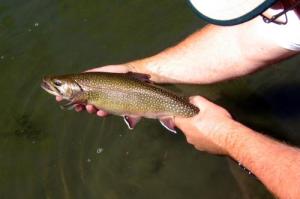Post
Upper Peninsula Sets Experimental Trout Regs
Michigan Fishing Articles, Regional Fishing, United States Fishing Articles | Michigan theangler PM

This limited experimental regulation is in response to requests from anglers to increase the daily possession limit on brook trout across the Upper Peninsula.
For selected stream segments, the daily possession limit for brook trout would be 10 fish and the minimum size limit would be 7 inches. Streams were selected from existing Type 1 streams which have a daily possession limit of five fish and a 7-inch minimum size limit.
Stream segments and their tributaries include: Dead River (Marquette County), Driggs River (Schoolcraft County), East Branch Ontonagon River (Houghton and Iron counties), East Branch Tahquamenon River (Chippewa County) and East Branch Huron River (Baraga and Marquette counties).
In October the DNR proposed a new Type 5 stream category at the Natural Resources Commission meeting, with 10 streams to be included. Angler input resulted in a reduction of the number of streams proposed from 10 down to five and the removal of the Type 5 category, substituting instead the experimental regulations category. In addition, the DNR has committed to evaluations that will begin next year.
The stream segments are not accessible to brook trout from the Great Lakes. In recent years, rehabilitation of lake-run brook trout populations has attracted considerable interest among resource agencies, conservation groups and anglers, and a variety of measures have been taken to protect these populations. These “coaster” brook trout are a life history variant and are not a genetically distinct strain or sub-species. The DNR has also proposed future work in this area of brook trout management.
Maps and written descriptions of the upstream (where applicable) and downstream boundaries for the experimental trout regulations are available at www.michigan.gov/fishing.
The Michigan Department of Natural Resources is committed to the conservation, protection, management, use and enjoyment of the state’s natural and cultural resources for current and future generations. For more information, go to www.michigan.gov/dnr.
